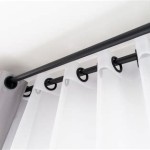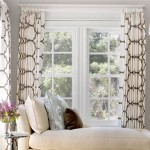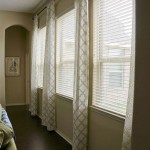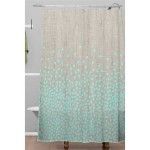Berner Air Curtain Door Switch: Functionality and Applications
Berner air curtains are commonly implemented in commercial and industrial settings to create an invisible air barrier across doorways. This barrier helps to maintain consistent temperatures, reduce energy consumption, and improve indoor air quality. A crucial component of many Berner air curtain systems is the door switch, which automatically activates and deactivates the air curtain based on the status of the door.
The door switch serves as the primary trigger for the air curtain's operation. Without a properly functioning door switch, the air curtain may run continuously, wasting energy, or fail to operate when needed, compromising its effectiveness. Therefore, understanding the function, types, and proper maintenance of Berner air curtain door switches is essential for optimizing the performance and energy efficiency of the entire air curtain system.
The precise design and implementation of the door switch system can vary depending on the specific Berner air curtain model and the application. However, the core principle remains consistent: the switch detects the opening and closing of the door and signals the air curtain to operate accordingly.
Types of Berner Air Curtain Door Switches
Several types of door switches are employed in Berner air curtain systems, each with its own advantages and disadvantages. The selection of the appropriate switch type depends on factors such as the door type, frequency of use, environmental conditions, and desired level of control.
Magnetic Reed Switches: These are among the most common types of door switches used in air curtain applications. A magnetic reed switch consists of two parts: a magnetic component that is mounted on the door and a reed switch component that is mounted on the door frame. When the door is closed, the magnet is in close proximity to the reed switch, causing the contacts within the reed switch to close, indicating that the door is shut. When the door opens, the magnet moves away, the reed switch contacts open, and the air curtain is activated. Magnetic reed switches are generally reliable and relatively inexpensive. However, they can be susceptible to damage from physical impact and may require adjustments over time to ensure proper alignment.
Roller Plunger Switches: Roller plunger switches utilize a spring-loaded plunger with a roller at the end. This roller comes into contact with a surface on the door. When the door is closed, the roller is depressed, activating the switch and indicating that the door is shut. Opening the door releases the roller, triggering the air curtain. Roller plunger switches are mechanically robust and can withstand more physical abuse than magnetic reed switches. They are often used in high-traffic areas where the switch is exposed to potential impacts.
Photoelectric Sensors: Photoelectric sensors use a beam of light to detect the presence or absence of an object (in this case, the door). The sensor consists of a light emitter and a light receiver. When the door is closed, the light beam is uninterrupted, signaling that the door is shut. Opening the door breaks the beam, activating the air curtain. Photoelectric sensors offer a non-contact method of door detection, which can be advantageous in environments where physical contact with the door is undesirable or impractical. However, photoelectric sensors can be more expensive than other types of door switches and may be susceptible to interference from dust, dirt, or ambient light.
Infrared Sensors: Similar to photoelectric sensors, infrared sensors use infrared light to detect the presence or absence of the door. They are less susceptible to visible light interference compared to photoelectric sensors. The functionality is similar, an uninterrupted infrared beam indicates the door is closed, while breaking the beam activates the air curtain.
Smart Door Switches: These switches incorporate advanced features and control capabilities. They may include timers, occupancy sensors, and connectivity options for integration with building management systems. Smart door switches can provide more precise control over the air curtain's operation, allowing for energy savings and improved comfort. For example, a smart door switch could be programmed to activate the air curtain only during business hours or to adjust the air curtain's fan speed based on the outside temperature.
Functionality and Operational Logic
The fundamental function of the Berner air curtain door switch is to provide an on/off signal to the air curtain's control system based on the state of the door. This signal is used to activate or deactivate the air curtain, ensuring that it operates only when needed. The operational logic can be implemented in various ways, depending on the specific requirements of the application.
In its simplest form, the door switch acts as a direct on/off control. When the door is open, the switch activates the air curtain; when the door is closed, the switch deactivates the air curtain. This basic configuration is suitable for applications where the door is opened and closed frequently and where precise control over the air curtain's operation is not critical.
Many Berner air curtain systems incorporate a time delay feature. This feature allows the air curtain to continue running for a specified period after the door has closed. This can be beneficial in preventing drafts and maintaining a consistent temperature near the doorway. The time delay is typically adjustable, allowing the user to fine-tune the air curtain's operation to suit the specific environment.
Some advanced systems also include occupancy sensors. These sensors detect the presence of people near the doorway and activate the air curtain even if the door is not opened. This can be useful in areas with high foot traffic, where the door may be open for extended periods. The occupancy sensor can work in conjunction with the door switch to provide a more responsive and efficient air curtain operation.
Furthermore, integrated building management systems can override or modify the behavior of the door switch and air curtain. This allows for centralized control and monitoring of the air curtain, as well as the ability to integrate it with other building systems such as HVAC and lighting.
Troubleshooting and Maintenance
Like any mechanical or electrical component, Berner air curtain door switches can experience problems over time. Regular maintenance and timely troubleshooting are essential to ensure the reliable operation of the air curtain system.
A common problem is misalignment of the switch components. This can occur due to door movement, settling of the building, or physical impact. Misalignment can prevent the switch from properly detecting the door's position. The solution typically involves adjusting the position of the switch components to ensure proper alignment.
Another potential issue is damage to the switch itself. Magnetic reed switches can be cracked or broken, roller plunger switches can become jammed, and photoelectric sensors can be damaged by dirt or moisture. Replacing the damaged switch is usually the most effective solution.
Electrical problems, such as loose connections or frayed wires, can also cause the door switch to malfunction. Inspecting the wiring and connections and making necessary repairs can resolve these issues.
Regular cleaning of the door switch components is also important. Dust, dirt, and debris can accumulate on the switch, interfering with its operation. Gently wiping the switch components with a clean, dry cloth can help to prevent these problems.
For smart door switches, software updates and firmware compatibility should be verified. Older operating systems may cause malfunctions and a lack of connectivity, requiring updates to function properly.
It is recommended to consult the Berner air curtain's user manual for specific troubleshooting and maintenance instructions related to the door switch. If the problem cannot be resolved through basic troubleshooting, it may be necessary to contact a qualified technician.
Proper maintenance and timely repairs will extend the life of the door switch and ensure the optimal performance of the Berner air curtain system. This, in turn, leads to reduced energy consumption, improved indoor air quality, and a more comfortable environment.

Common Door Switches Berner

Berner Air Curtains 9503mrs1f2 Nc K Magnetic Reed Door Switch For

Berner Clc08 1072a 72 Freezer Door Air Curtain Unheated

Berner Air Curtains 9503sd025 Pr A Automatic Door Switch Plunger Roller

Berner Air Curtains 9503sd020 P Door Switch

Berner Chd10 1036a 36 Air Curtain Compact

Berner 9012lc20assa 120 120v Magnetic Reed Door Switch Load Center Box Kit

Berner Offers Bacnet And Digital Controls For Air Curtains

Berner Air Curtain Door Switches Controls

Berner Recessed Air Curtain Intelli Switch Controls








